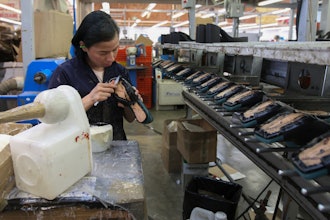We’re excited to provide the readers of Industrial Distribution with the results of our 68th annual Survey of Distributor Operations. The objectives of this report, as always, have been to understand the most critical issues affecting distributors, and to provide data to help drive their educated business decisions. Through these findings, we’ll discuss new and ongoing industry trends, and what trends have fizzled.
Webinar: The Future of the Independent
In this segment, we focus specifically on:
- Demographics, which establishes a profile of survey respondents based on company size, years in business, sales volume, and product line.
- Challenges, Trends & Economy, which outlines the initiatives distributors are undertaking to address key business and market concerns. This also covers mergers and acquisitions, and how distributors view the impact of the economy.
- The Balance Sheet, which offers insights into revenues and profitability. This addresses areas of investment, concern, and other analysis of factors impacting revenue.
- Best Practices, which sheds light on distributor relationships with suppliers and customers, as well as their global business plans and what challenges are involved.
- Tech Usage & Investments, which covers areas like e-commerce and other big-impact technology solutions for now and the future.
- Value of the Distributor, which addresses the reasons our survey respondents believe customers do business with them, and which service offerings play a significant role in the industry.
- Employment, which identifies hiring and layoff trends, recruitment, and compensation.
Methodology
The results of this study are based on an email survey sent to Industrial Distribution subscribers. Recipients of the survey were offered an incentive to complete the questionnaire. Industrial Distribution’s subscriber base is comprised of 30,000 readers, the majority of whom identify as executive, upper management, sales, or sales management. Results are based on a pool of respondents within this subscriber base.
Because Industrial Distribution transitioned to a new publisher in 2010, no survey was conducted that year. Therefore, results which track comparisons over the past decade will reflect a gap between 2009 and 2011.
Comments on this year’s results? Email ID’s executive editor, Anna Wells, at [email protected].
Best Practices
As e-commerce continues to re-shape the industrial distribution marketplace, supplier best practices have tended to stay the same. But many independents are several generations old or more, so it takes a long time for their general principles to shift.
Even so, our survey shows a trend developing when asked to rank the most important factor when evaluating suppliers (Figure 2). To no surprise, quality took the top spot again, and by a hefty margin. What’s interesting, however, is that the percentage of those that ranked quality at the top has gone from holding steady at 88-89 percent from 2009-2012, to 85 percent in 2013-14 and down to 84.8 percent this year. Respondents could choose up to three criteria items.
Granted, in the big picture that is still only a 3-4 point drop, and quality was still nearly 12 points above the No. 2 item – on-time delivery (63 percent) – but it is the consistency that is notable. This is now three straight years of decline. Distributors once again said that carrying the best products is key to success. But is having the best product becoming less of a priority? Only time will tell.
As previously stated, on-time delivery came in second at 63 percent, just ahead of service/support’s 62.6 percent. That is about a 3 point dip from last year for on-time delivery, while service/support increased 8.5 points. Service/ support climbed steadily from 2009-2013 before a drop-off a year ago, but charts again now as a close No. 3 factor. On-time delivery had a steady decline from 76 percent in 2009 to 63 percent in 2013, but has leveled off these past two years at 66 and 63. Price, in fourth place, snapped a steady decline from 67 percent in 2009 to 50.6 percent last year, charting at 57 percent this time around. In fifth place, reputation of a supplier stayed essentially the same, with a 2 point increase.
The state of this relationship between distributors and suppliers is always important to keep an eye on, and as it has in recent years, respondents indicated that relationship remains mostly unchanged (Figure 1).More than one half of respondents said their supplier relationship has stayed the same, just over a third said it’s gotten better, while 11 percent say it’s gotten worse. Those are each within a few points of last year, with 3 points more saying their relationship has gotten better in the last year than 2013.
Going hand-in-hand with that, those who believe their level of support has improved has increased by 2 points over last year, and those who say it has gotten worse has increased a point as well. Those who believe support has stayed the same is a group around 3 percentage points smaller.
Like in years past, distributors indicated that manufacturers again increased prices in the last year, with 88 percent saying yes. Interesting to note is a decreasing percentage there, however. In 2011 and 2012, 97 percent said manufacturers increased prices, 91 said yes in 2013, and it’s dipped to 89 and now 88 percent in 2014 and 2015.
Though prices keep going up, distributors say that a strong portion of manufacturers have worked with them to offset business costs (Figure 3). This year more than 44 percent of distributors said manufacturers have helped with new product introductions, up 4 points from last year. Better than 35 percent said manufacturers have helped with co-op advertising/marketing, a 1.7 point increase. Also showing increases were manufacturers helping with technical assistance (+1.6 points), reduced shipping (+2.1 points), and extending terms (+1 point).
In 2013 we started asking respondents if their business installed or maintained vending machines at customer locations. While less than one third – 30 percent – once again said yes, that is up from 25 percent last year and 22 percent in 2013. Of those that said no, 85 percent said they don’t intend on purchasing vending machines, an identical figure from last year.
The overall vending numbers show a growing trend for vending in industrial distribution, which correlates to its success in the marketplace. Distributors are following the lead of Fastenal, which increased its number of FAST Solutions machines nearly 15 percent, to 46,855 nationwide in 2014.
Our best practices portion finished with asking about global business intentions. This year, 50 percent of respondents said they were already doing business outside the U.S., down 5 points from last year. That figure was 52 percent in 2013, so the minor fluctuation doesn’t raise an eyebrow. Forty percent this year said they have no plans to expand globally, only a 1 point increase from 2014. This shows that while distributors are growing their business beyond the U.S., it is not at a rapid rate.























